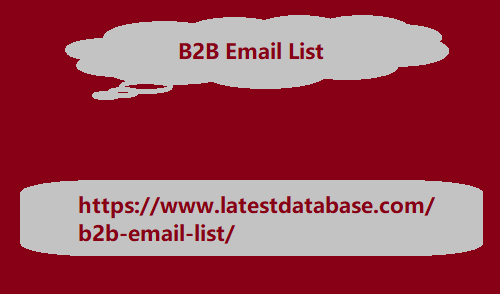Post by account_disabled on Jan 24, 2024 4:54:45 GMT
When I was writing " 10 Quotes From Marketing Experts That Will Inspire You ", I was struck by advice from LinkedIn's content marketing manager: Do fewer things, better. You don't get a prize when you click "Publish" and it's not realistic to think that just because you publish something once that means your entire audience has seen it. Your audience is diverse and has a variety of content consumption preferences. I would recommend spending 20% of your time creating content and 80% distributing it. Don't forget to go back and measure the values before starting the next thing! Alex Rynne, Content Marketing Manager at LinkedIn The 80/20 rule is often encountered in companies' content strategies. Content distribution is a key factor in your success. We haven't written much about content distribution, even though it's important to us. Read below for a guide on how to distribute content to get thousands of visitors and followers. Have an active presence Your posts should be frequent and consistent.
73.4% of people who follow a company online do so because they are interested in the services the company offers. ¹ They want to know more, don't be "squeamish" with information. Consistency is important, because if you go a month without posting anything and then start posting every day, it feels forced and lacks the spirit of transparency that audiences expect on social media. Frequency depends on what you post, but a good rule of thumb is to not post more than you would like to see from a brand you like. PS Please, no grid pos B2B Email List ts that fill up the audience's feed. Combine the power of several media Online media are divided into 3 types: paid - traditional ads, native ads, social media ads, PPC, etc. owned - this includes your media such as website, blog, brand channels, social networks, etc. earned - sharing of your content (shares), mentions (mentions), reposts (reposts), etc. Redirect paid media to networks you own, your website or social networks. Share your knowledge on the media you own and make it as fun as possible.

Paid media is very important, as it often brings new visitors and customers to your site. Especially if you are new to the market or are offering an innovative service, paid media helps to create brand awareness and bring in the first interests. Content sharing guide You can "earn" media by combining media you own and paid media. For example, you can post an article, promote it on social networks and get extremely positive comments. Readers or viewers themselves become a channel. They bring you new visitors and expanded audiences. For example, through native advertising (paid media) we featured the article on our website (owned media). We achieved 7,417,934 impressions, from which we earned shares and mentions (earned media). Make sure you are relevant When you see a post from a brand, you should have some idea of the brand that posted it without seeing the name. When a coffee company posts about cars, it's not relevant or relatable and confuses the audience. Of course there are exceptions and maybe the company could use a metaphor that hits with cars. But no matter how good your distribution strategy is, if the content is not relevant or interesting to the audience, it will not be shared, enjoyed or bring visitors. Marketing expert Neil Patel's guide is one of the best on the subject.
73.4% of people who follow a company online do so because they are interested in the services the company offers. ¹ They want to know more, don't be "squeamish" with information. Consistency is important, because if you go a month without posting anything and then start posting every day, it feels forced and lacks the spirit of transparency that audiences expect on social media. Frequency depends on what you post, but a good rule of thumb is to not post more than you would like to see from a brand you like. PS Please, no grid pos B2B Email List ts that fill up the audience's feed. Combine the power of several media Online media are divided into 3 types: paid - traditional ads, native ads, social media ads, PPC, etc. owned - this includes your media such as website, blog, brand channels, social networks, etc. earned - sharing of your content (shares), mentions (mentions), reposts (reposts), etc. Redirect paid media to networks you own, your website or social networks. Share your knowledge on the media you own and make it as fun as possible.

Paid media is very important, as it often brings new visitors and customers to your site. Especially if you are new to the market or are offering an innovative service, paid media helps to create brand awareness and bring in the first interests. Content sharing guide You can "earn" media by combining media you own and paid media. For example, you can post an article, promote it on social networks and get extremely positive comments. Readers or viewers themselves become a channel. They bring you new visitors and expanded audiences. For example, through native advertising (paid media) we featured the article on our website (owned media). We achieved 7,417,934 impressions, from which we earned shares and mentions (earned media). Make sure you are relevant When you see a post from a brand, you should have some idea of the brand that posted it without seeing the name. When a coffee company posts about cars, it's not relevant or relatable and confuses the audience. Of course there are exceptions and maybe the company could use a metaphor that hits with cars. But no matter how good your distribution strategy is, if the content is not relevant or interesting to the audience, it will not be shared, enjoyed or bring visitors. Marketing expert Neil Patel's guide is one of the best on the subject.
